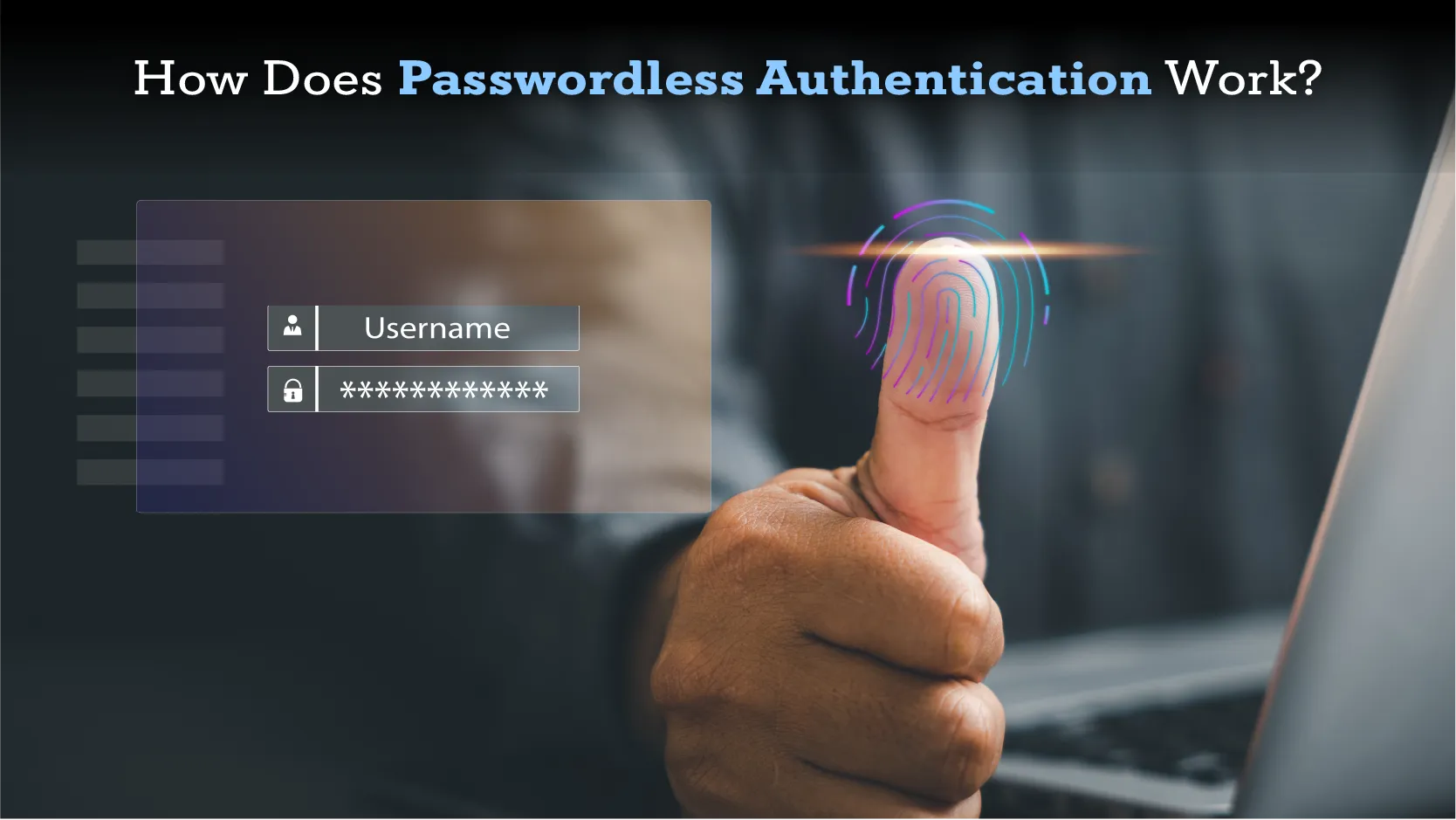Passwordless authentication, as the name implies, is gaining access to an application without the need for any passwords.
The password management market is estimated to hit a valuation of $7.3 billion by 2030. This is a massive amount of money to keep our passwords safe. Going passwordless could save a lot of bucks.
But then, what about the safety concerns? What are its benefits, and most importantly, are there any disadvantages? How is this form of authentication different from the traditional one? Let’s find answers to these questions in this article.
What Is Passwordless Authentication?
Passwordless authentication is an authentication method where a user can access an application or IT system without entering a password or answering security questions. Instead, they provide some other form of evidence, like a proximity badge, fingerprint, or hardware token code. This type of authentication method is mostly used along with Single Sign-On solutions and Multi-Factor Authentication (MFA). This helps to improve UX, user security, and minimize the cost and complexity of IT operations.
How Does Passwordless Authentication Work?
 Passwordless authentication replaces traditional passwords with better alternatives. Instead of a password stored in a database, these systems use other ways to verify who you are.
Passwordless authentication replaces traditional passwords with better alternatives. Instead of a password stored in a database, these systems use other ways to verify who you are.
Using biometrics, for example, the system takes a picture of your face or other distinctive feature and matches it to data that has been saved. An alternative method is to use SMS to send a one-time passcode to your phone, which you can then enter to log in.
Digital certificates, which employ a key pair consisting of a private key and a public key, are comparable to this. The private key is the key that opens a padlock, much like the public key does.
Users generate a public-private key pair through tools such as a mobile application or browser extension to establish a secure account. This is kept on the user’s device and can be accessed using an OTP, PIN, or fingerprint. The system receives the public key to function.
Also Read: What is Identity Orchestration? Benefits, Tools
What Is the Need for Password Authentication?
People use a lot of apps, nowadays. This means they have to remember and keep track of a gazillion passwords. According to Google reports, 75% of Americans struggle to remember their passwords.
Fed with remembering multiple passwords, people often opt for shortcuts like using the same password for all apps, using weak passwords, reusing passwords, or posting passwords on sticky notes.
Threat actors can take advantage of poor password management to launch attacks and steal sensitive data. Compromised accounts are the #1 cause of data breaches.
Simple username and password combinations are vulnerable. Attackers can steal or even worse guess your credentials easily and get access to sensitive information and IT systems using:
- Using software to create random password and username combinations or take advantage of popular, vulnerable passwords like 111111 is known as brute force.
- Credential stuffing is the practice of accessing another account using credentials that have been stolen or leaked from another (people typically use the same login or password for several accounts).
- Phishing is the practice of tricking a target into providing their credentials by sending phony emails or texts.
- Installing malware on a computer to record keystrokes for passwords and usernames is known as keylogging.
- Man-in-the-middle: monitoring communication channels (such as those using public WiFi) and replaying login credentials
Types of Passwordless Authentication
There are three main types of authentication via passwordless.
- Biometrics: This is done by scanning the face, eyes, fingerprints, etc.
- Elements of possession: authentication by a personal item that the user is carrying around or owns. For instance, an SMS-received OTP, a hardware token, or the code produced by a smartphone authenticator app.
- Magic links: When a user inputs their email address, an email is sent to them by the system. There is a link in the email that, when clicked, gives the person access.
Passwordless Authentication Vs MFA
When it comes to passwordless authentication versus MFA (multi-factor authentication), the main difference lies in the use of passwords. With passwordless method of authentication, passwords are completely eliminated, relying instead on alternative authentication factors. On the other hand, MFA includes passwords as one of the authentication factors, along with other factors like biometrics or possession factors.
Another difference to consider is the user experience. Passwordless is often seen as faster and more convenient because users don’t have to remember or enter passwords. In contrast, MFA may require users to provide multiple factors during the authentication process, which can be seen as more cumbersome.
Since password vulnerabilities are eliminated, passwordless is usually considered safer than MFA with passwords. Unlike MFA, the passwordless method also provides a more convenient user experience.
Disadvantages of Passwordless Authentication
 Implementation Challenges: This authentication can be tricky and requires significant changes to your existing systems and infrastructure. It means integrating new technology and ensuring it works with different devices and platforms.
Implementation Challenges: This authentication can be tricky and requires significant changes to your existing systems and infrastructure. It means integrating new technology and ensuring it works with different devices and platforms.- Resistance to Change: Some stakeholders (users and IT teams) may be resistant to passwordless because they’re not familiar with new authentication methods or need additional training and support.
- Cost: While the passwordless method saves you money in the long run, there’s an upfront cost to deploying new hardware or software solutions like biometric scanners or token-based systems.
- Limited Compatibility: Not all systems and apps support passwordless methods, so it’s limited in its adoption. You’ll run into compatibility issues when you try to integrate authentication via password into your existing systems.
- Dependency on Alternative Factors: It relies on alternative factors like biometrics or possession factors. If those factors are compromised or unavailable, it hinders the authentication process and can lock you out of your account.
Is the Future Passwordless Authentication?
Yes, many experts and big shots in the industry reckon that the way forward for authentication is to ditch passwords altogether.
Passwordless authentication is all about beefing up identity security by getting rid of the weaknesses that come with passwords and, at the same time, making the whole process smoother and more user-friendly.
Thanks to cool technologies like biometrics, hardware keys, and mobile devices, this type of authentication is really catching on and is expected to become super popular in the future.































